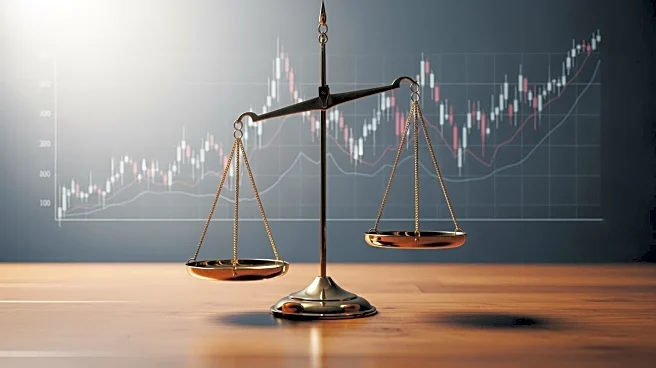What's Happening?
The U.S. Senate has passed a deal to end the longest government shutdown in history, restoring federal funding and alleviating investor concerns. This development has led to a surge in stock markets, with
the S&P 500 climbing 1.5% and the Dow Jones Industrial Average rising 0.8%. The reopening of the government is expected to release a raft of economic data, including jobs and industrial production figures, which could inject volatility into the markets. The Federal Reserve recently cut interest rates, but Chair Jerome Powell has cautioned against assuming another cut in December due to uncertainty over key data on employment and inflation.
Why It's Important?
The end of the government shutdown is significant as it removes a major uncertainty that has been weighing on the U.S. economy and financial markets. The reopening is expected to provide clearer economic data, potentially allowing the Federal Reserve to make more informed decisions regarding interest rates. This could impact various sectors, including technology, which has seen concerns over elevated valuations. The resolution of the shutdown may also lead to a rebound in economic activity, as seen in previous instances, which could benefit businesses and investors.
What's Next?
The deal now heads to the House of Representatives, where Speaker Mike Johnson aims to pass it quickly and send it to President Trump for his signature. Prediction markets have nearly fully priced in a reopening by the end of the week. The release of delayed economic data in the coming weeks will be closely watched by markets and the Federal Reserve, as it could influence future monetary policy decisions.
Beyond the Headlines
The shutdown has highlighted vulnerabilities in the U.S. political system, particularly the impact of prolonged government closures on economic stability and public services. The resolution may lead to discussions on preventing future shutdowns and improving fiscal management. Additionally, the focus on technology sector valuations may prompt a reassessment of investment strategies in this area.













